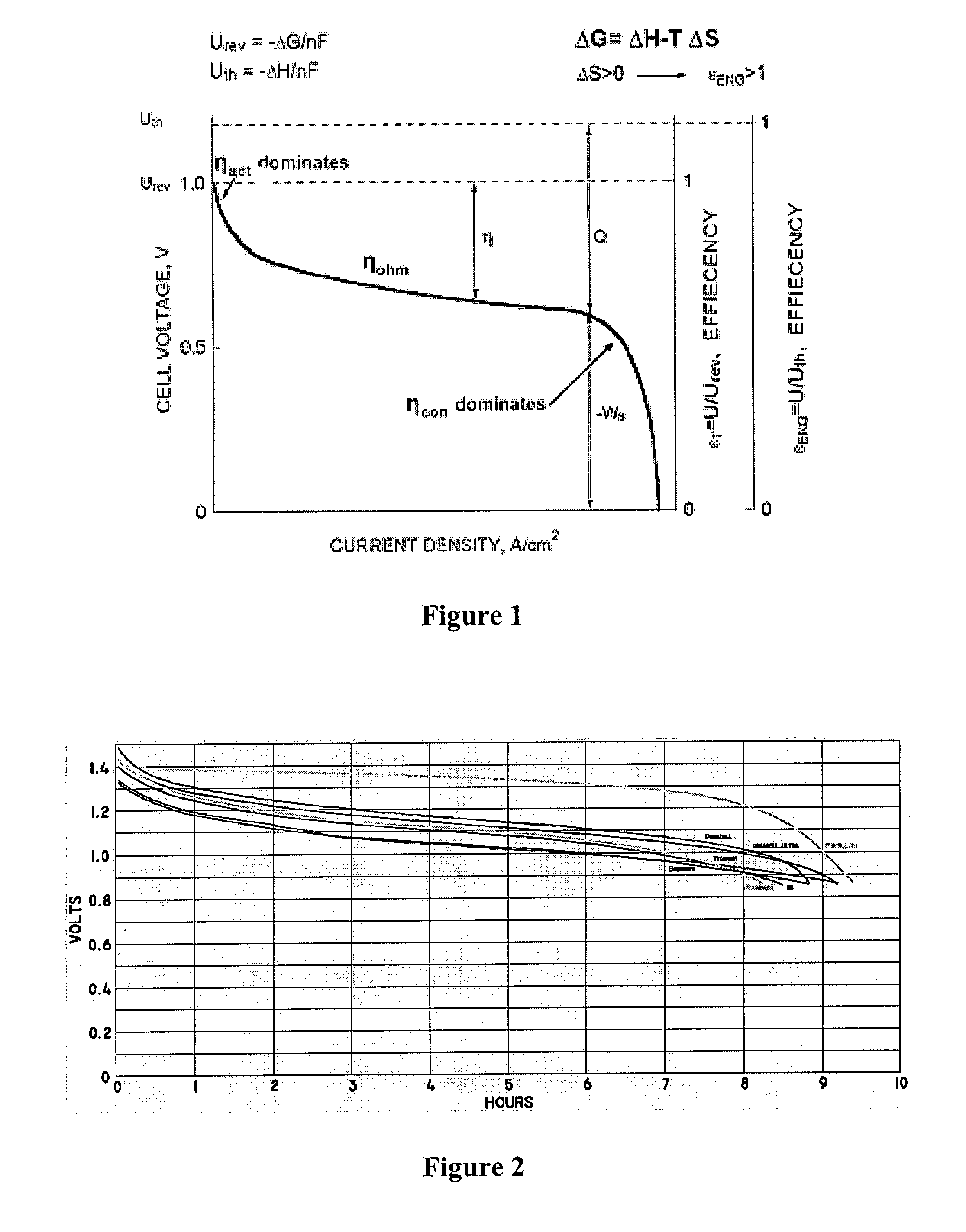Micro gap flow through electrochemical devices with self adjusting reactive surfaces
a technology of reactive surface and micro gap flow, which is applied in the direction of electrical equipment, metal-working equipment, electrochemical devices, etc., can solve the problems of increasing the size of the electrode, and reducing the return
- Summary
- Abstract
- Description
- Claims
- Application Information
AI Technical Summary
Benefits of technology
Problems solved by technology
Method used
Image
Examples
Embodiment Construction
[0023]The inventor has discovered that numerous electrochemical devices can be configured in a simple and effective manner in which heretofore known problems associated with mass transport phenomena are substantially eliminated. Contemplated devices and methods will provide substantially improved reaction kinetics and “good-to-the-last-drop” performance of power cells.
[0024]Therefore, in one aspect of the inventive subject matter, electrochemical reactors use highly restricted electrolyte pathways in which the boundary layers of laminar flow at the electrode walls begin to touch each other and allow for perfect mixing in a single boundary layer at laminar flow. Viewed from a different perspective, configurations and methods are contemplated in which electrolyte films move through an electrochemical reactor. Therefore, and among other configurations, a one pass reactor is particularly contemplated in which the rate of reaction and completion of reaction are controlled by the electrol...
PUM
| Property | Measurement | Unit |
|---|---|---|
| Reynolds numbers | aaaaa | aaaaa |
| Reynolds numbers | aaaaa | aaaaa |
| Reynolds numbers | aaaaa | aaaaa |
Abstract
Description
Claims
Application Information
 Login to View More
Login to View More - R&D
- Intellectual Property
- Life Sciences
- Materials
- Tech Scout
- Unparalleled Data Quality
- Higher Quality Content
- 60% Fewer Hallucinations
Browse by: Latest US Patents, China's latest patents, Technical Efficacy Thesaurus, Application Domain, Technology Topic, Popular Technical Reports.
© 2025 PatSnap. All rights reserved.Legal|Privacy policy|Modern Slavery Act Transparency Statement|Sitemap|About US| Contact US: help@patsnap.com



